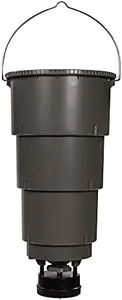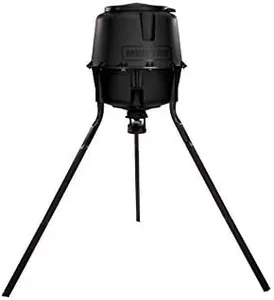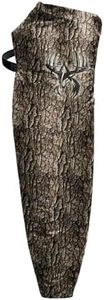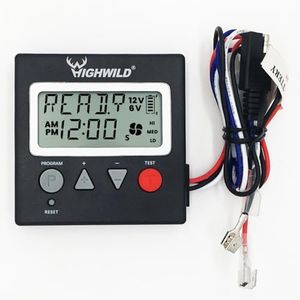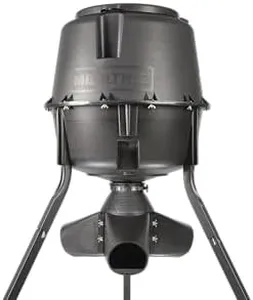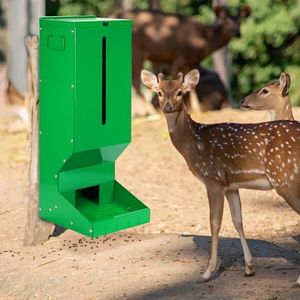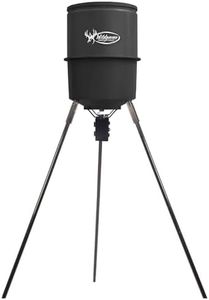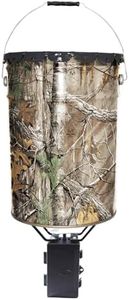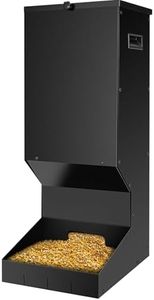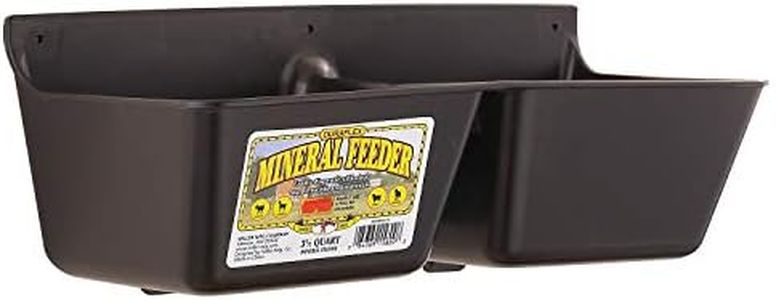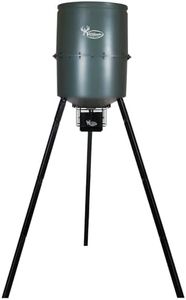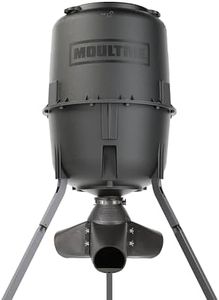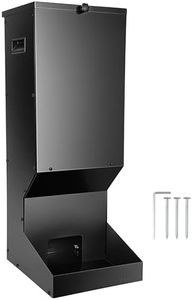We Use CookiesWe use cookies to enhance the security, performance,
functionality and for analytical and promotional activities. By continuing to browse this site you
are agreeing to our privacy policy
10 Best Deer Feeders
From leading brands and best sellers available on the web.Buying Guide for the Best Deer Feeders
Choosing the right deer feeder is all about matching your needs and the environment where the feeder will be used. Think about why you want to feed deer—whether it's for wildlife observation, hunting preparation, or simply supporting local wildlife populations. Different feeders offer various ways of delivering food, time intervals, and capacities, so understanding these features will help you make the best choice. Always consider the local wildlife regulations and the specific habits of the animals in your area before making your decision.Feeder TypeThe type of deer feeder determines how the feed is dispensed. Common types include gravity feeders, spin (broadcast) feeders, and trough feeders. Gravity feeders use the force of gravity to let food flow down to where deer can access it, making them simple and reliable. Spin feeders use a battery or solar-powered motor to distribute feed at set times, which is useful for controlling feeding schedules and attracting deer to a specific spot. Trough feeders are open containers that allow multiple deer to feed at once, suitable for supporting larger groups. Your choice depends on how much control you want over feeding times and how many deer you expect in your area.
Feed CapacityFeed capacity refers to how much deer feed the feeder can hold at one time. Smaller feeders may hold 50 pounds or less, while larger ones can store several hundred pounds. Higher capacity means you’ll need to refill the feeder less often, which is ideal if you can’t check it frequently. Smaller capacities are fine for personal observation or areas with low deer traffic, while high capacities fit remote locations or spots with lots of wildlife activity.
Material and DurabilityThe material of the feeder affects how long it will last and how well it stands up to weather and animals. Most feeders are made from metal or heavy-duty plastic. Metal is highly durable and keeps animals like raccoons from chewing through, but it can rust if not properly coated. Plastic is lighter and rust-proof, but may crack in extreme cold. Choose a feeder with materials that suit your climate and the types of animals around. If you're putting the feeder in a remote, harsh area, prioritize toughness.
Weather ResistanceWeather resistance means how well the feeder can handle rain, snow, and sun without letting moisture spoil the feed. Look for feeders with tight-fitting lids and weatherproof construction to keep the feed dry and fresh. If you’re in an area with heavy rainfall or snow, make sure your feeder is designed to shield feed from moisture. Feeders that fail to protect against weather will lead to waste and attract pests.
Ease of Refilling and CleaningEase of refilling and cleaning is about how simple it is to add more food to your feeder and keep it hygienic. Some feeders have wide openings and easy-access lids, making them much more convenient to use. Consider how often you’ll need to refill and whether you can easily reach the feeder. For long-term use, easy cleaning will help prevent mold and ensure the deer stay healthy. If cleaning looks tricky, you may want to choose a simpler design.
Pest and Animal ProofingPest and animal proofing protects your feed from unwanted visitors like raccoons, squirrels, and even bears. Features like locking lids, metal construction, and specially shaped openings can help keep non-target animals out. If you’re in an area known for clever or persistent pests, it’s worth choosing a feeder with strong animal-proof features to make sure the deer get the food instead of other wildlife.
Mounting and Placement OptionsMounting and placement options refer to whether the feeder can be easily set on the ground, strapped to a tree, or mounted on a pole. Some feeders are free-standing while others need to be attached to a support. Think about where you want to place your feeder and what’s available at your site. Make sure to choose a feeder type that fits your land and makes it easy to fill and maintain, as well as keeping it safe from flooding or tampering.
Timer and Programmable FeaturesTimer and programmable features allow you to set when and how often feed is dispensed, which is especially useful with spin feeders. This helps you control deer activity and conserve feed by only releasing it at certain times. If you want to manage wildlife patterns more closely or avoid wasting feed, a feeder with programmable timers can be very helpful. If you’re not concerned with timing, a simple gravity feeder might be all you need.
